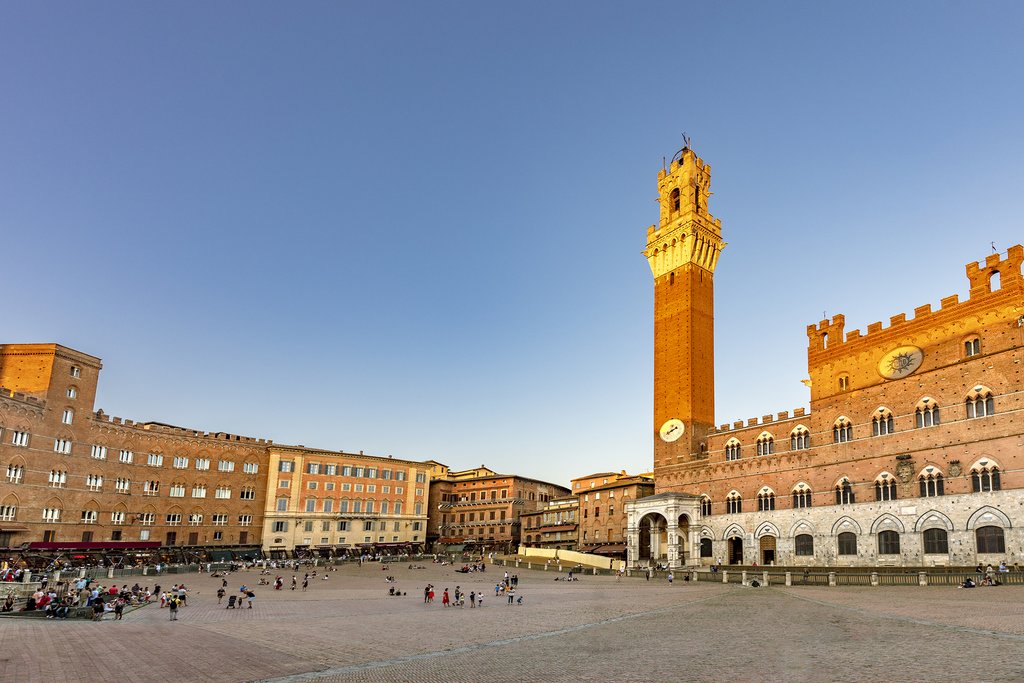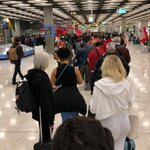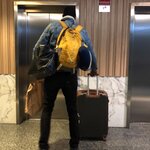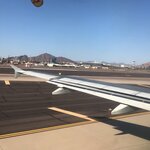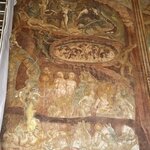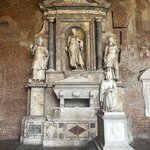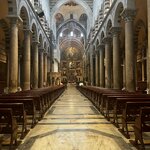Highlights
- Explore the world-famous Vatican Museums and Sistine Chapel
- Tour Florence's medieval piazzas, bridges, and cathedrals
- Enjoy a wine tasting in the Tuscan cities of Siena and San Gimignano
- Discover Rome's most ancient sites at the Colosseum and Roman Forum
- Learn how to make traditional Italian pasta in Florence
Brief Itinerary
| Day | Highlights | Overnight |
|---|---|---|
| Day 1 | Arrive in Rome, Explore | Rome |
| Day 2 | Vatican City & Rome Walking Tour | Rome |
| Day 3 | Colosseum & Roman Forum Tour | Rome |
| Day 4 | Train to Florence, Afternoon City Tour | Florence |
| Day 5 | Local Cooking Class in Florence | Florence |
| Day 6 | Tuscany Day Trip: Siena, San Gimignano, Monteriggioni & Chianti | Florence |
| Day 7 | Depart Florence |
Detailed Itinerary
Day 1: Arrive in Rome, Explore

Welcome to Rome, known as the City of the Seven Hills! According to legend, Rome was founded by brothers Romulus and Remus in 753 BCE atop Palatine Hill. As the long-time center of the powerful Roman Empire, you'll find nearly 3,000 years of architecture, history, and culture throughout the city.
After arriving at one of Rome's airports, you'll transfer to your hotel in the historic center. Settle in and relax, then head out for a stroll and your first look at the Eternal City. The next few days will involve lots of sightseeing, so spend your first few hours enjoying some of the highlights. Suggested activities include:
- Visit the Catacombs of Priscilla, which were originally used from the 2nd to 5th centuries as burial grounds for the elite families of Rome. After the entrance was blocked for centuries to protect it from thievery, the catacombs were rediscovered in the 16th century. Visitors can see the original structures as well as paintings and artifacts from various time periods.
- Stroll through the tangle of narrow streets in Centro Storico, one of Rome's most historic districts, to see classical Roman and Baroque architecture.
- Stop to see the Colonna di Marco Aurelio, a Doric column with a spiral of relief sculptures. It was erected in the 2nd century CE to celebrate the victories of the emperor Marcus Aurelius.
- Head to the Colle Aventino, one of Rome's famous seven hills. Stroll through the Roseto Comunale, the rose garden which sits on the site of a former Jewish cemetery. Then continue to Parco Savello (Orange Tree Park), where you can find the famous keyhole that gives visitors a direct view of the Vatican. Grab a cappuccino and snack from one of the adjacent cafés.
- For an authentic market experience, stop by the Mercato dei Fiori, where locals shop for fresh vegetables, flowers, meats, and cheeses. Browse for authentic Italian pasta and other souvenirs, then take a break with coffee and a pastry at one of the many cafés surrounding the market.
For dinner, head to the Trastevere neighborhood for some of the city's best trattorias.
Day 2: Vatican City & Rome Walking Tour

Today you'll enjoy a six-hour tour of Rome, starting with a visit to the Vatican City Museums and the Sistine Chapel. The Vatican is not only rich in history but also in art, housing some of the most important Renaissance masterpieces in the world. You'll visit the Pio Clementio Museum, plus the Gallery of the Candelabra, the Gallery of Tapestries, and the Gallery of the Geographical Maps.
Continue through the museums to the Raphael Rooms, where you can admire the frescoes before entering the incredible Sistine Chapel and St. Peter's Basilica. Your guide will help you experience the allure of Renaissance art by divulging secret details and untold stories throughout the tour.
Afterward, continue your tour by visiting some of Rome's most notable landmarks. Cross Piazza della Repubblica to see the Fountain of the Nyands, then continue to the Trevi Fountain and the Palazzo di Montecitorio, which Bernini designed. If you have time, walk over to the Roman Forum, where you can find excavated temples and squares dating back 2,000 years. On your way back into the city center, stop to admire the exterior of the Pantheon, then head inside for a look at the ancient Roman temple. Continue to Palazzo Madama—the Senate seat—and end in the lively Piazza Navona.
Finish your evening with a stroll through the piazza, stopping for some pizza, gelato, and people-watching.
Day 3: Colosseum & Roman Forum Tour

Dive into the history of the Roman Empire with a walking tour of the Colosseum, the world's largest amphitheater. Learn about the lives of some of ancient Rome's most famous and illustrious citizens, such as Julius Caesar, Emperors Augustus and Nero, and the Flavian Emperors who built the Colosseum.
Continue to the Roman Forum, where you'll see excavations dating back 2,000 years, exposing temples, squares, religious sites, and other buildings. These were the former platforms of speeches, processions, elections, and, of course, gladiator matches. Historians and archaeologists together refer to the Roman Forum as the most celebrated place in world history, and you'll see why as you admire its grounds.
End your tour of ancient Rome atop Palatine Hill. To get there, walk along the street Via Sacra, passing by the Temples of Vesta, Antonino, and Faustina. Visit the Basilica Julia and Aemilia and experience the grandeur of the Roman Empire. Enjoy incredible views of the city, with the Vatican in the distance and the Tiber River curving around its historic neighborhoods.
In the evening, you'll have free time to continue exploring Rome. Grab dinner in one of the city's other neighborhoods, such as eclectic and bohemian Monti or upscale Prati, which is brimming with Art Nouveau architecture.
Chat with a local specialist who can help organize your trip.
Day 4: Train to Florence Afternoon City Tour

Enjoy your morning with breakfast at your hotel and one final stroll around the neighborhood. Then catch your train to the city of Florence. Spend the afternoon exploring the city's top sites with a guided, half-day walking tour. You'll stroll through Florence's historic center, passing by Piazza della Repubblica and the nearby Cathedral of Santa Maria del Fiore, the symbol of the city, which is known for its terracotta dome. The picturesque cathedral is flanked by Giotto's Bell Tower and the Baptistery with impressive bronze doors. Get lost in its exterior tile, or head inside to admire its sculptures, art, and crypt.
For the rest of the day, you can continue your exploration of the city at your leisure. Some suggested activities include:
- Stroll through the Galleria dell'Accademia, which displays Michelangelo's "David" sculpture
- Head to Studio Artemisia, located steps away from the Ponte Vecchio, for a class on ancient fresco-painting techniques
- Visit the Mercato Centrale, a 19th-century open-air market, to browse for a wide selection of vegetables, fruits, meats, and cheeses, and a variety of lunch spots
- Take a walk through the peaceful Boboli Gardens to see the oval-shaped Isolotto, a small island surrounded by various sculptures and lots of greenery
In the evening, stroll around the Piazza della Signoria in front of the Palazzo Vecchio. Enjoy some gelato and people-watching, followed by dinner and drinks in the hip Sant'Ambrogio neighborhood.
Day 5: Local Cooking Class in Florence

Enjoy a leisurely morning in Florence, with breakfast at your hotel and a few slow strolls through the historic center. Visit some of the sights you haven't been able to see yet or catch views of Ponte Vecchio and the Arno River atop Piazzale Michelangelo.
In the afternoon, you'll meet your hosts near the center of Florence for a traditional Italian cooking class. They'll welcome you with a glass of prosecco and an appetizer. Enjoy the venue as you sample Italian cheese and salvio fritti (fried sage) or coccoli fritti (deep-fried bread dough) served with stracchino cheese and prosciutto.
Next, you'll roll up your sleeves and learn to cook regional Italian pasta from recipes passed down through generations. Your hands-on Italian cooking class will last about three hours. You'll learn to cook four dishes from scratch, including a side or dessert. Observe the chef's different tricks and techniques involved in cooking Italian family recipes. In the summer months, you might be able to use the small vegetable and herb garden in the courtyard where zucchini, tomatoes, and herbs are grown. The best part of the class is at the end, where you'll enjoy your freshly-made dinner in a traditional Italian style, shared with your hosts.
Day 6: Tuscany Day Trip: Siena, San Gimignano, Monteriggioni & Chianti

In the morning, you'll head to the Tuscan countryside to explore the Chianti Region. Your first stop will be the medieval village of San Gimignano, a UNESCO World Heritage Site located an hour away from Florence. Explore the beautiful squares, palaces, and churches of the city before taking a break with a coffee in a terraced café. Continue to the Chianti Classico wine region to visit a typical Tuscan winery. Tour the cellars and vineyards, then enjoy a wine tasting accompanied by a traditional lunch of pasta, cured meats, cheeses, and local desserts.
In the afternoon, you'll visit nearby Siena, a medieval city brimming with historical sites. You can't miss the incredible main square, Piazza del Campo, which is surrounded by the Gothic Pubblico Palace, the Tower of Mangia, and the Gaia Fountain. Walk over to the 13th-century cathedral, Duomo di Siena, which dominates the skyline of the city.
Finish the day with a visit to the medieval fortress of Monteriggioni before returning to Florence for the final night of the trip.
Day 7: Depart Florence

Your exploration of Italy will end after breakfast, with a transfer to the airport to catch your flight home or to your next destination.
More Great Italy Itineraries
Looking for more inspiration for your trip to Italy? Check out these other Italy itineraries, explore different ways to spend one week in Italy, or discover the best time to visit Italy.
